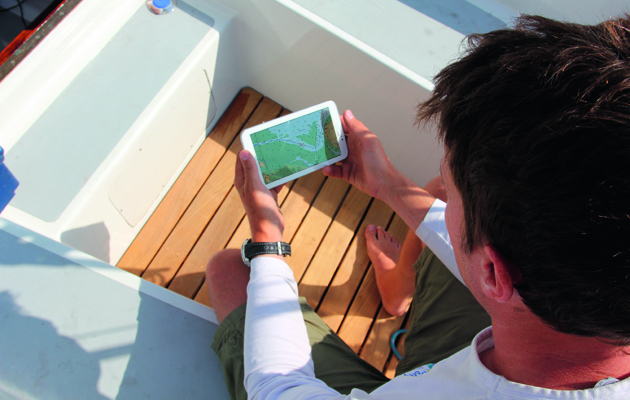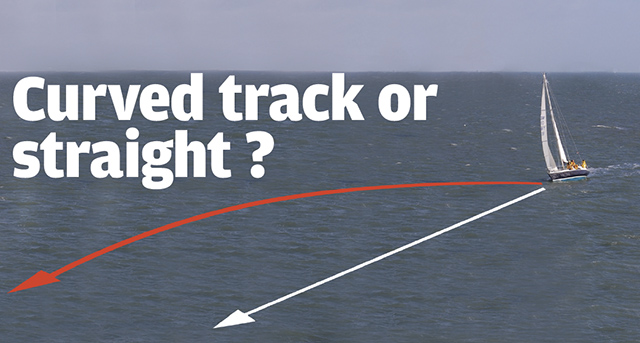Why make heavy going in choppy conditions when a less demanding alternative heading will get you to your destination in about the same time? Asks Dick Everitt.
Tacking to windward involves a bit of ‘suck it and see’ navigation, before doing too much chart work.
With cross currents we’ll need to think about lee bowing (see previous Nav in a Nutshell) and we’ll need to see which heading the boat feels the most comfortable on.
Bashing through waves by sailing close to the wind can be hard on the crew, make the boat feel sluggish and increase leeway.
It’s often better to bear away slightly to roll over waves, get the boat speed up and reduce leeway.

DIAGRAM 1 shows boat A doing 4 knots at 045° and boat B doing 5 knots at 055°. In theory they should both arrive at the same time because the left hand side of the vector triangle shows they are both travelling north towards their destination at 2.8 knots. This figure of 2.8 knots for both boats is known as VMG (velocity made good – which we’ll look at another time) but it’s likely that boat B would have had a more comfortable trip in choppy conditions.

DIAGRAM 2 shows we’ve got a steady wind and tide and we’re on a comfortable port tack. When it’s safe to do so, we can do a short starboard tack and settle down to see what a comfortable course over the ground (COG) will be. This COG is then used as the ‘bearing to waypoint’ for the final tack to our destination. Obviously it makes sense to go a bit further upwind and tide to give ourselves a suitable safety margin.

DIAGRAM 3 is the same situation with the possibility of the wind direction turning variable, so the final leg is up a tacking cone defined on each side by ‘bearings to waypoint’. This diminishing zigzag course will allow us to react to wind shifts, which we’ll look at in detail next time.
GPS makes planning tacking angles a bit easier as it looks down from on high and gives us a COG (course over the ground – which is the track that the shadow of our boat would make over the seabed as she’s being pushed around by wind and tide).
This Nav in a Nutshell was published in the June 2012 issue of PBO.
A handy guide to using traditional skills for navigation
PBO contributor Sticky Stapylton shows how to work out an estimated position and course to steer
14 iPad and Android navigation apps tested
Gear test following an explosion in the number of marine navigation apps available for iPad and Android devices in the…
Nav in a nutshell: Electronic charts
Dick Everitt assesses the differences between raster and vector charts when deciding on which chart plotter to buy
Nav in a nutshell: Coping with currents
Dick Everitt explains how sailors can apply knowledge of tidal streams to ensure that water flow is a help, not…
Nav in a nutshell: Know tidal vectors
'It’s easy for any sailor to remember how to draw tidal vectors with a handy little aide-mémoire!' Says Dick Everitt.…
Nav in a nutshell: Shaping a course
GPS is not infallible, so it makes sense to know the basics of shaping a rough ‘course to steer’ on…
Nav in a nutshell: How to use a Breton Plotter
Breton Plotters are simple to use in practice, but tricky to explain on paper – it’s much easier if you…
Nav in a nutshell: Curved track or straight?
GPS will keep us on the straight and narrow by constantly showing how much we need to adjust our heading…
Tablet navigation – mount it safely
Why not mount it on the washboards?
Nav in a nutshell: Tacking to clear a headland
Simple step-by-step chartwork can show us when we’ll need to tack to clear a headland, says Dick Everitt.
Nav in a nutshell: Lee bowing defined
Dick Everitt explains how you can get a little lift from the tide
Latest hazard to Thames navigation
David Walliams swimming river for Sport Relief
















